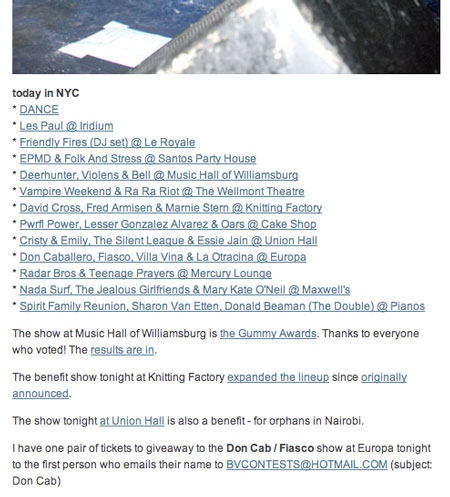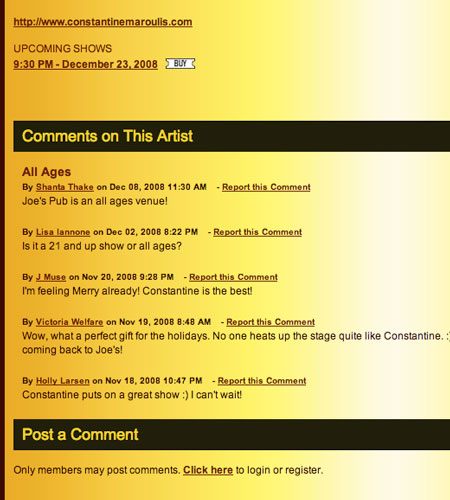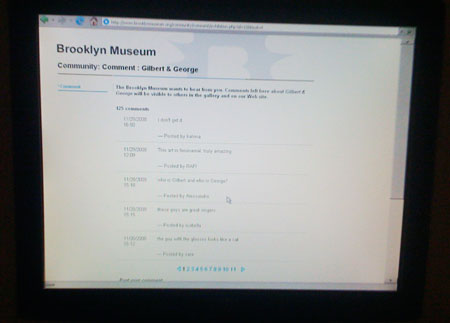Gawker reports that Mark Pinsky from The New Republic wants Obama to bring back the Federal Writer’s Project:
The Federal Writers Project operated from 1935-1939 under the
leadership of Henry Alsberg, a journalist and theater director. In
addition to providing employment to more than 6,000 out-of-work
reporters, photographers, editors, critics, writers, and creative
craftsmen and -women, the FWP produced some lasting contributions to
American history, culture, and literature. Their efforts ranged from
comprehensive guides to 48 states and three territories to interviews
with and photos of 2,300 former African-American slaves. These are
preserved in the seventeen volumes of Slave Narratives: A Folk History of Slavery in the United States from Interviews with Former Slaves.
I wonder how our numbers compare to those 6,000 from seventy years ago.
Other solutions for the lack of journalists problem – correction, lack of jobs for journalists problem – are being explored by Joe’s Pub and The Brooklyn Museum. As mentioned here before, Joe’s Pub has added a comments feature to all of their concert pages, essentially skipping (or, attempting to skip?) the need for listings on music blogs like Brooklyn Vegan:
 And here is the Joe’s Pub site:
And here is the Joe’s Pub site:
 The problem is that the Joe’s Pub site is less-visited than a lot of music listings blogs, so a concert getting a mention with users’ comments on Brooklyn Vegan will drive new audiences to Joe’s Pub, whereas the comments on the Joe’s Pub site presumably drive folks who are already there to other/additional concert options.
The problem is that the Joe’s Pub site is less-visited than a lot of music listings blogs, so a concert getting a mention with users’ comments on Brooklyn Vegan will drive new audiences to Joe’s Pub, whereas the comments on the Joe’s Pub site presumably drive folks who are already there to other/additional concert options.
Along similar lines, when I was at the Gilbert & George exhibition at the Brooklyn Museum a couple weekends back, I was thrilled to see that they had a computer comment kiosk in the gallery space!

What’s your verdict? Should the federal government subsidize journalism again, or do online comments from the people = a new journalism?
[And, yikes, will your answer be along “party” lines?]

As the publicity/marketing head at the time Joe’s Pub launched the most current iteration of its website, I was one of the people responsible for delineating the parameters of what we wanted the new site to accomplish. I was the primary champion for allowing for visitor comments, both for the venue’s general announcements and individual artist pages. Perhaps unsurprisingly, the change met with resistance on the way in; there was a great deal of fear that we would have to deal with flaming and slander about the club or the performers. Instead, the feature has served to provide a safe space for discussion between Joe’s artistic staff, performers and fans.
Additionally, by allowing the audience to take part in open discussion about Joe’s shows, the venue was able to get direct and unbiased feedback and more fully cultivate an environment wherein patrons would see the venue as “their space”. This sense of camaraderie is further actuated by the participation of the venue staff in the comments; “Shanta Thake”, answering the question in your photo as to the venue’s age appropriateness, is Joe’s Pub’s artistic director and lead booker!
Speaking more to your point about audience building, the hope was that the site’s bevy of unique content (mp3s, youtube videos, artist portraits and exclusive audio interviews with performers) that Joe’s Pub posts in support of most of their many shows would serve to increase the visitor pool by drawing in a varied, artist-driven crowd of interested listeners. It appears to have worked; prior to my leaving the venue at the start of ’08, unique web traffic had more than trebled since the introduction of that media content in ’06.
Letting the audience in is going to be a very important factor in the next few years and those companies who see the audience as the enemy won’t survive.
Social media at it’s best is all about connection, communication and creativity – it’s important for arts organization to see that and use it in their marketing.
And I love the idea of a kiosk at a classical recital. Although I can just imagine some of the reactions – computers and classical music…..
Presenters thinking of audiences as the enemy is a very interesting way to look at it. There’s a lack of respect there – we want audiences to pay to see what we’re presenting, but don’t actually value their opinions, or trust their powers of analysis? I’m generalizing, but the psychology of it is fascinating. There’s also a deep fear, as John points out in the comment below and I’ve mentioned before on this blog, of anything even bordering on critical or negative. One of the comments at the ‘Gilbert & George’ kiosk at the Brooklyn Museum was “I don’t get it.” Did that make me like the exhibition less? Of course not. It’s Gilbert and George – the acknowledgment that some people aren’t going to “get” it or even like it is important and understandable, not scary. Thanks for commenting! -AA